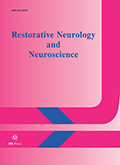Authors: Li, Chen | Cao, Xuhua | Ma, Zhizhao | Sun, Xiaofeng | Hu, Fuguang | Wang, Liqun
Article Type:
Research Article
Abstract:
Background: Extracranial-intracranial (EC-IC) bypass surgery has been used to improve the conditions of cerebral ischemia symptoms for selected patients resulting from diverse complications such as stroke and atherosclerotic disease. However, several clinical trials showed EC-IC bypass surgery failed to prevent recurrent ischemic stroke in certain patients. Objective: Our clinical trial aimed to investigate whether there is a correlation between pre-surgery assessments and prognosis of patients received EC-IC bypass operation. Methods: We divided all patients into 4 groups according to their compensatory stages of cerebral ischemia. The values of cerebral blood flow (CBF), cerebral blood volume (CBV),
…mean transit time (MTT), time to peak (TTP), and oxygen extraction fraction (OEF) were obtained by computed tomography perfusion (CTP), single photon emission computed tomography (SPECT), and positron emission tomography (PET) at different time points before and after EC-IC bypass surgery. We assessed the correlations between the compensatory stage with modified Rankin scale (mRS) scores, survival rates, stroke and TIA incidences over the 12 months after surgery. Results: Patients with normal CBF, normal or increased CBV, and normal OEF tended to have a better prognosis after the EI-CI bypass operation than patients with abnormal CBF, CBV and OEF. However, patients with abnormal CBF and CBV, and increased OEF showed elevated mRS, less survival rates, and higher stroke and TIA incidences over the 12 months after surgery, compared to the groups with normal CBF, CBV and OEF. Conclusions: Our results suggest that a defined compensatory stage of cerebral ischemia might be useful for the prognosis of patients receiving EI-CI bypass surgery.
Show more
Keywords: Extracranial-intracranial (EC-IC) bypass surgery, oxygen extraction fraction (OEF), cerebral ischemic, stroke, transient ischemic attack (TIA)
DOI: 10.3233/RNN-180848
Citation: Restorative Neurology and Neuroscience,
vol. 36, no. 5, pp. 593-604, 2018
Price: EUR 27.50





